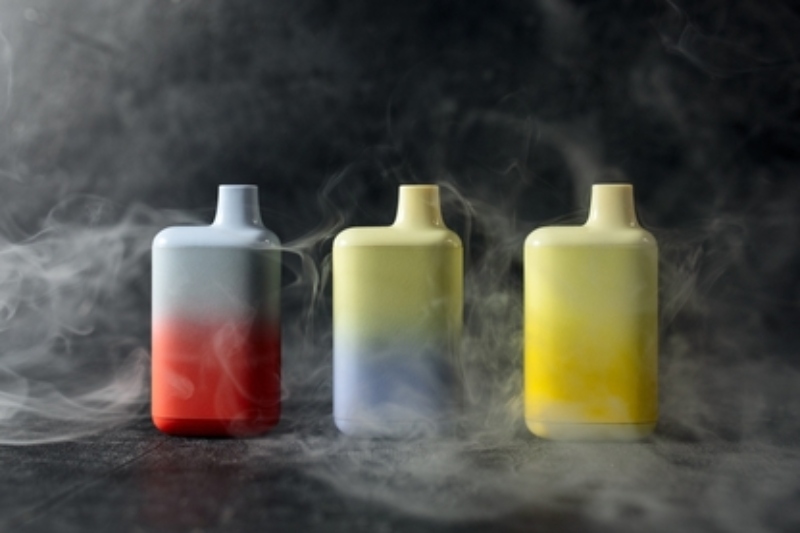Vicky Beechey, National Association of Waste Disposal Officers (NAWDO), makes the case for banning single-use disposable vapes.


There has been considerable media coverage on the issue of vapes and vaping. Whether it’s about the design and marketing of disposable vapes attracting a younger audience using bright colours and flavours such as Skittles and watermelon, the lasting health impacts, or the way that they are disposed of it’s a big talking point. While all are important, we want to focus on their disposal and the impacts of doing this incorrectly. And show why we think single-use disposable vapes should be banned.
As the National Association of Waste Disposal Officers (NAWDO), a local authority representative network, our membership is at the sharp end of municipal waste disposal, including vapes. Disposable vapes are considered by NAWDO members as over-engineered; produced with lithium-ion batteries which have a use far beyond that of the average 400-700 puffs in a disposable vape. Generally, the kits are glued together, with an assembly that is not designed for recycling. It is dangerous to take the vape apart to get to the battery and recycle it correctly. According to research undertaken by Material Focus in 2022, there is enough power inside the amount of disposable vapes disposed of annually to power 1,200 electric vehicles!
Under the Waste Electronic and Electrical Equipment (WEEE) Regulations, vapes are listed as leisure products, in the same category as electric toys. Because of the recycling costs, current compliance charges for companies that are registered are wholly inadequate to fund the true cost of collection, processing, and disposal. To compound the issue, many producers are also not registered under the regulations. Producer compliance schemes are in discussion with central Government to seek to balance out compliance costs to treatment charges. Although they have an obligation to take these products, a massive influx is likely to bankrupt some schemes because of the limited fees being paid currently.
WEEE retailers are obligated to provide takeback on a like-for-like basis for products they sell, but businesses selling less than £100,000 of Electrical and Electronic Equipment (EEE) per year have the alternative to join the Distributor Takeback Scheme which discharges their legal duties and provides funding for WEEE drop-offs at household waste recycling centres (HWRC). However, many retailers do not appear to be aware of their obligations with only limited (if any) takeback services being provided.
The waste management issues are legion, starting with both incorrect disposal and the health and safety risks. Thanks to the poorly designed packaging, lightweight nature and on-the-go use, vapes are usually littered and/or placed in the general (non-recycling) bin. The result? Very low capture rates, making it even more difficult to recycle the batteries. As disposable vapes are so lightweight and small, they are also difficult and expensive to manage. With only limited collection points and specialist options available for collecting these as a segregated waste stream – you can immediately see where the issues lie.
If li-ion batteries are pierced or damaged in any way, the batteries can explode and burn. When handling waste, crushing of materials is inevitable. This is problematic when considering the risks of the vape batteries. The consequential impacts and risks to both staff and members of the public because of explosions and fires are significant. In 2022, around 700 fires in collection trucks and waste treatment facilities were caused by batteries, many of which are hidden inside electrical items such as vapes. In addition, waste treatment sites are also struggling to insure their facilities because of this risk. In plants such as energy recovery facilities, battery explosions can cause damage to equipment, resulting in unplanned shutdowns or possible emission spikes.
So, what can be done? NAWDO is calling for a holistic approach to manage the issue – ban disposable vapes, like many other countries have or are planning to; utilise refillable vapes only as a tool for public health; and recategorize vapes under the WEEE regulations to ensure sufficient funding is made available to manage these products correctly at the end of their lifetimes.
A deposit return scheme could also go a long way to ensuring that it’s the producers and importers funding the correct disposal of these products, removing the burden from all taxpayers under the current system. This also links up well with the circular economy and the need to reduce resource use, such as virgin lithium, and fossil fuel-based packaging, such as single-use plastic.
This article first appeared in the Autumn issue of LAPV. To subscribe for free click here.